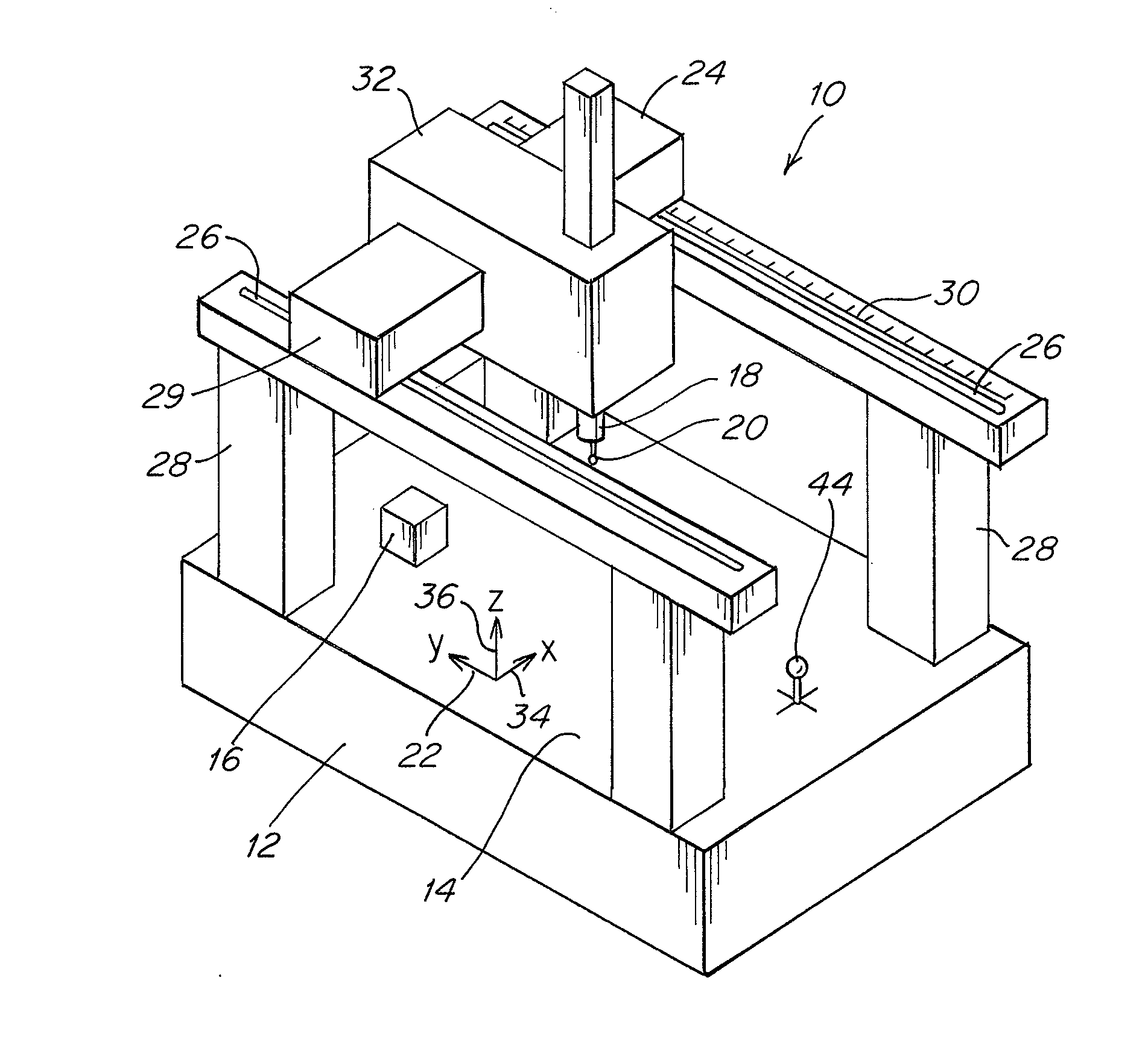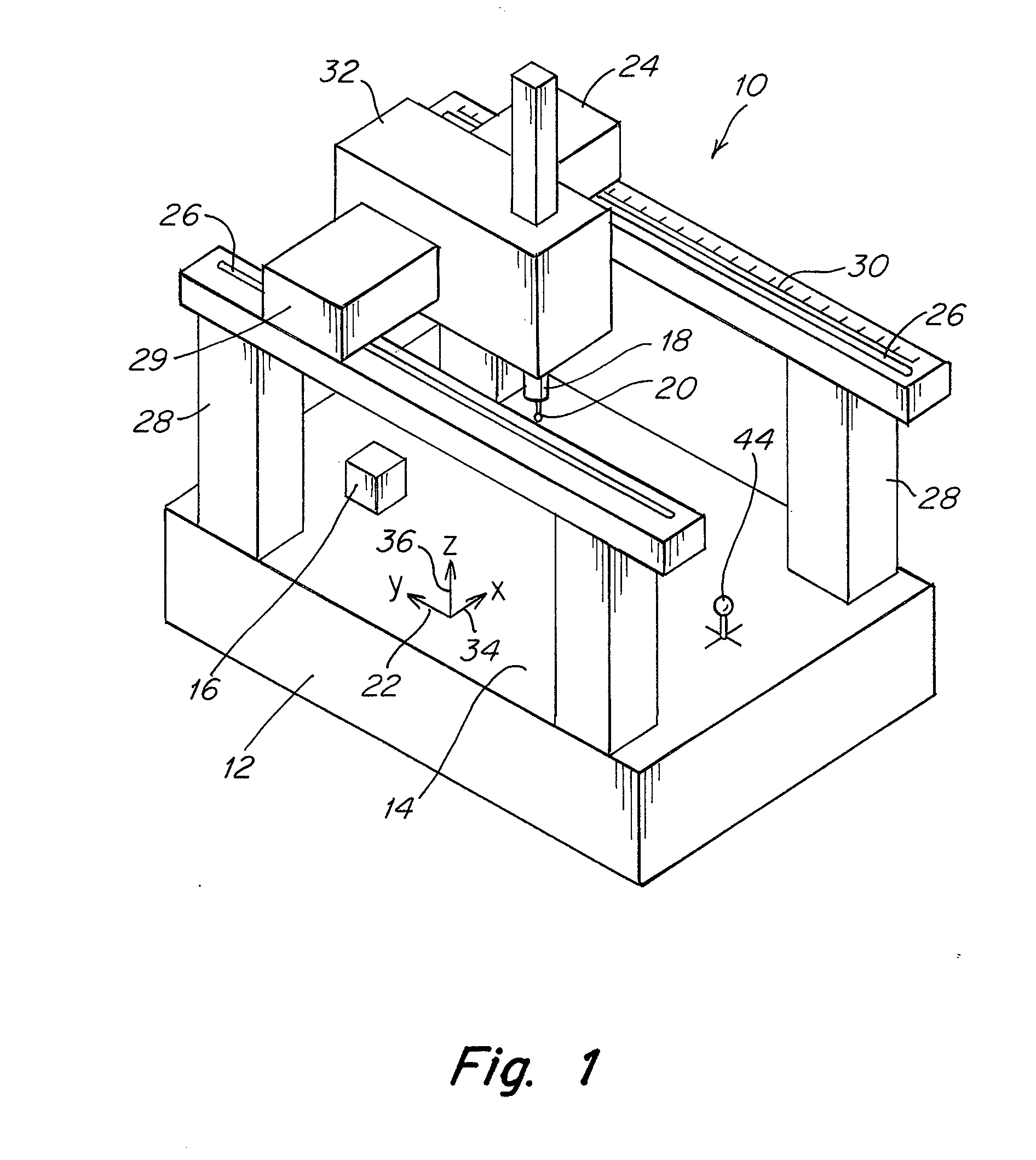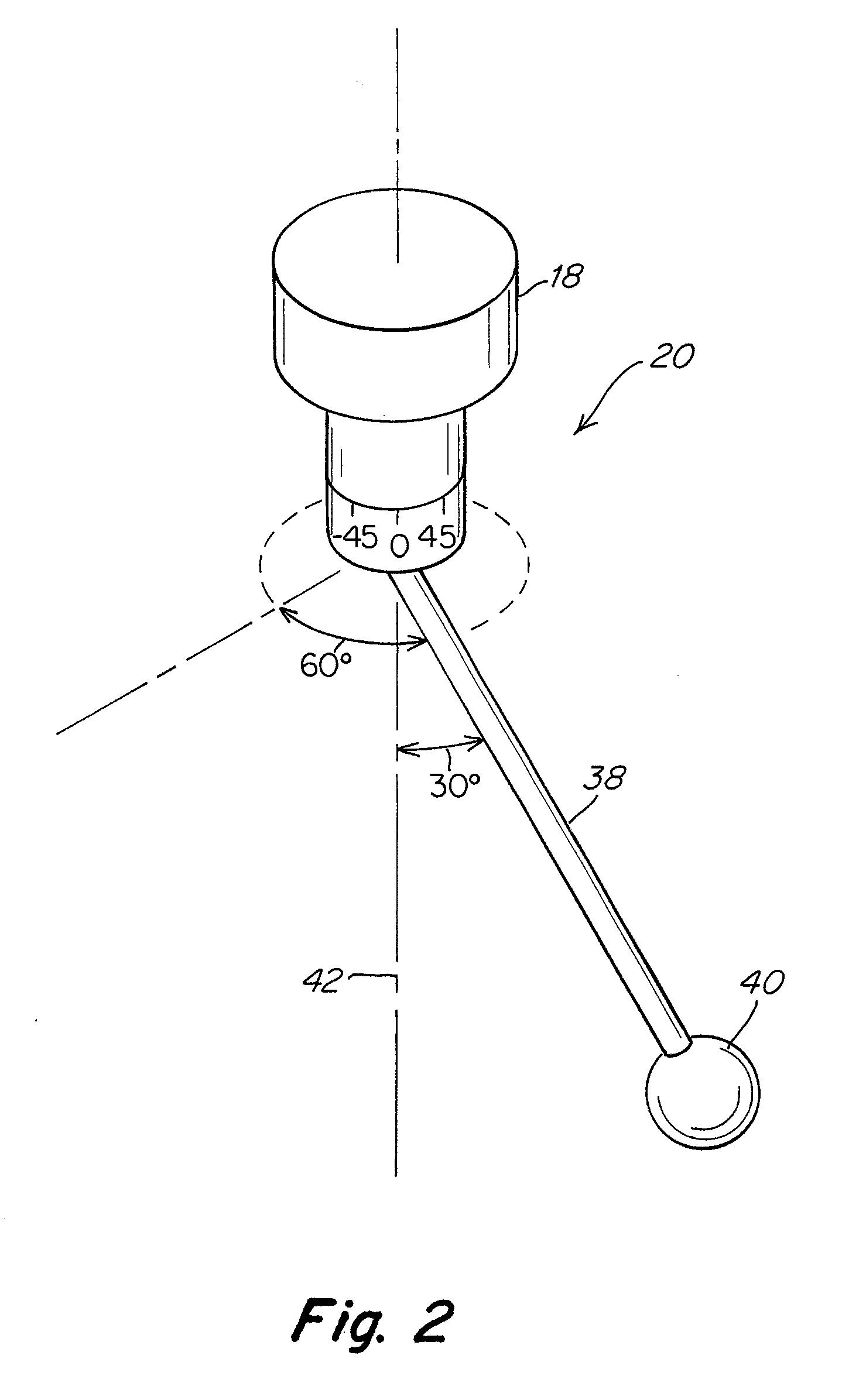Method and apparatus for probe tip diameter calibration
a probe tip and calibration method technology, applied in the field of coordinate measuring machines, can solve the problems of dynamic-type position errors that may occur during the calibration of the probe tip, the movement of the arm along the x-axis direction is associated with a systematically varying x-axis position error, and the movement of the arm along the y-axis direction is associated with a systematically varying y-axis position error. , to achieve the effect of improving the accuracy of measurement,
- Summary
- Abstract
- Description
- Claims
- Application Information
AI Technical Summary
Benefits of technology
Problems solved by technology
Method used
Image
Examples
example 1
[0052]Diameter measurements were made with a probe assembly in which a 125 mm to long shaft 38 was disposed at five different angular orientations with respect to arm 18 of a CMM. These five angular orientations were associated with five different machine positions. Diameter measurements were repeated three times at each of these five different machine positions. The resulting probe diameter measurements are shown in Table 1 below. All diameter measurements are reported in millimeters. The convention used to identify a probe shaft angle includes the letter “A” followed by the angle of the probe shaft with respect to central axis 42 of arm 18 and the letter “B” followed by the rotational angle of a probe shaft about central axis 42 of arm 18.
TABLE 1Probe Diameter Measurements with Different Probe Shaft AnglesPosition 1Position 2Position 3Position 4Position 5(A0B0)(A30B135)(A30B-135)(A30B45)(A30B-45)2.99742.99662.99642.99852.99832.99772.99632.99642.99842.99802.99782.99642.99622.99842....
example 2
[0057]In a second example, the probe shaft angle was changed for each of seven probe tip calibration routines that were performed in combination with a qualifying routine for a CMM. In the qualifying routine, 20 mm gauge blocks were aligned along each of seven orientations, and a probe tip diameter calibration routine was performed prior to measuring each of the 20 mm gauge blocks. The probe shaft angle was changed for each of the calibration routines, as indicated in Table 3. The seven orientations included orientations parallel to x, y, and z axes, as well as four orientations that were at various angles to the x, y, and z axes, including a diagonal designated as (+X+Y+Z) that ran along the positive x, y and z directions, a diagonal designated as (−X+Y+Z) that ran along the negative x and positive y and z directions, a diagonal designated as (−X−Y+Z) that ran along the negative x and y directions and the positive z direction, and a diagonal designated as (+X−Y+Z) that ran in the p...
PUM
 Login to View More
Login to View More Abstract
Description
Claims
Application Information
 Login to View More
Login to View More - R&D
- Intellectual Property
- Life Sciences
- Materials
- Tech Scout
- Unparalleled Data Quality
- Higher Quality Content
- 60% Fewer Hallucinations
Browse by: Latest US Patents, China's latest patents, Technical Efficacy Thesaurus, Application Domain, Technology Topic, Popular Technical Reports.
© 2025 PatSnap. All rights reserved.Legal|Privacy policy|Modern Slavery Act Transparency Statement|Sitemap|About US| Contact US: help@patsnap.com



